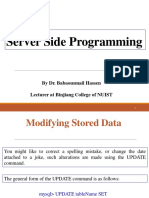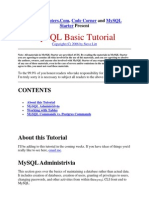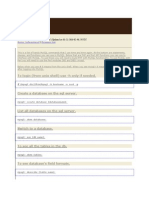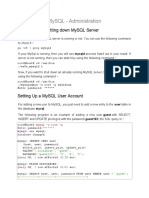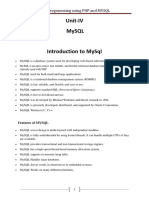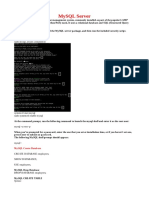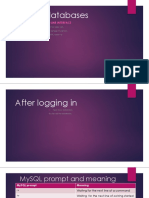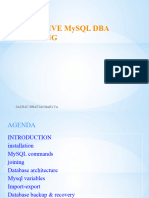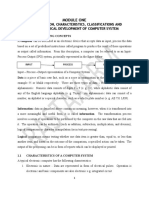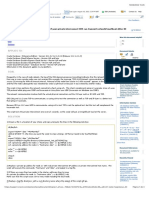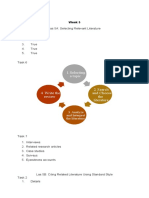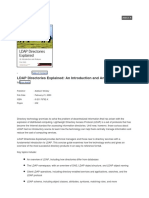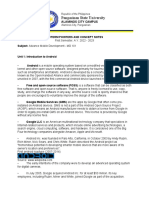0% found this document useful (0 votes)
76 views21 pagesMySQL User Management Guide
1. User management in MySQL allows database administrators to create, delete, and alter users to protect databases from unauthorized access.
2. Users are granted privileges at the global, database, table, and column level through entries in MySQL grant tables such as user, db, tables_priv, and columns_priv.
3. Common user management tasks for administrators include adding new users, setting passwords, granting privileges, and removing privileges.
Uploaded by
Eriko Novi TriantoCopyright
© © All Rights Reserved
We take content rights seriously. If you suspect this is your content, claim it here.
Available Formats
Download as PDF, TXT or read online on Scribd
0% found this document useful (0 votes)
76 views21 pagesMySQL User Management Guide
1. User management in MySQL allows database administrators to create, delete, and alter users to protect databases from unauthorized access.
2. Users are granted privileges at the global, database, table, and column level through entries in MySQL grant tables such as user, db, tables_priv, and columns_priv.
3. Common user management tasks for administrators include adding new users, setting passwords, granting privileges, and removing privileges.
Uploaded by
Eriko Novi TriantoCopyright
© © All Rights Reserved
We take content rights seriously. If you suspect this is your content, claim it here.
Available Formats
Download as PDF, TXT or read online on Scribd
/ 21




